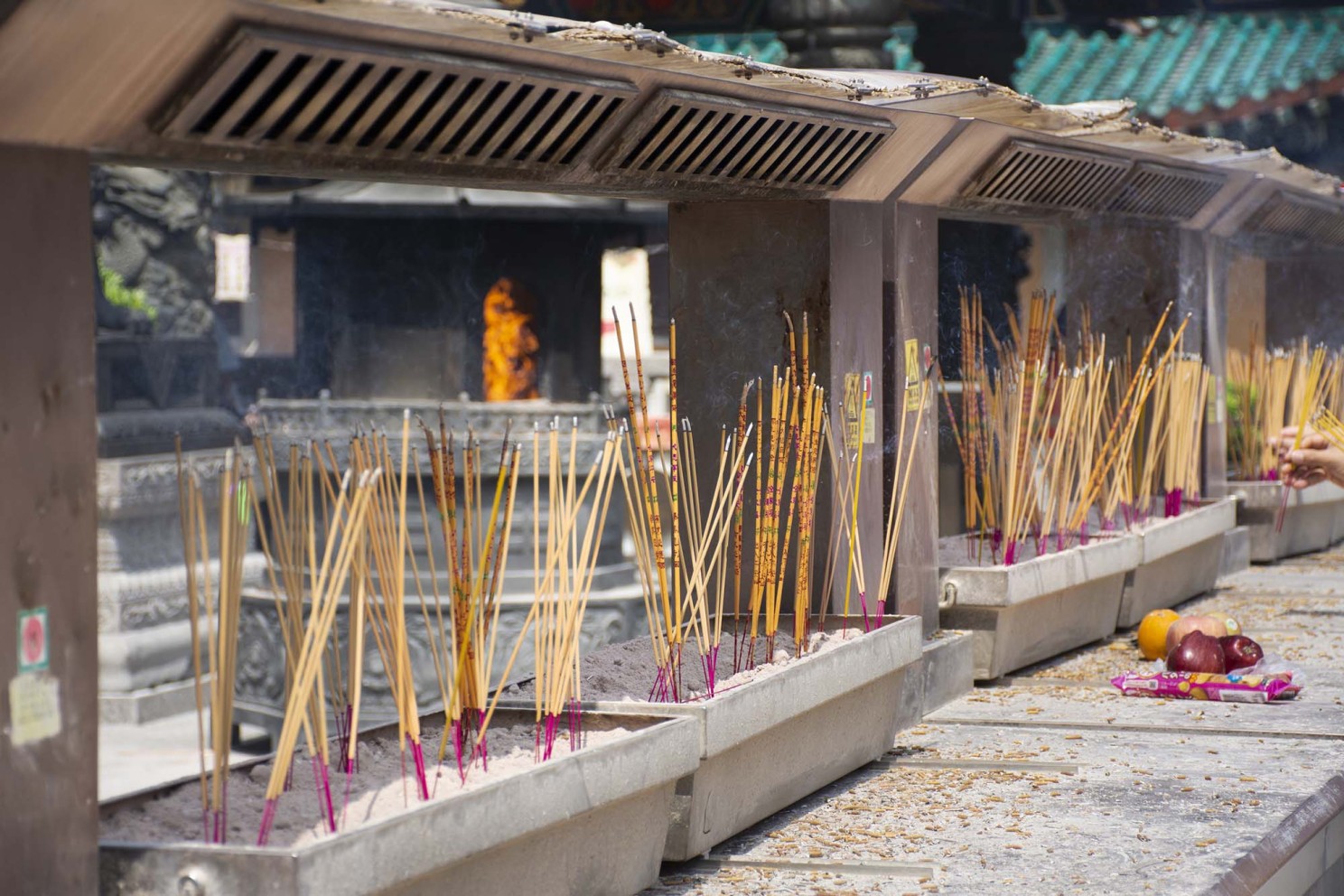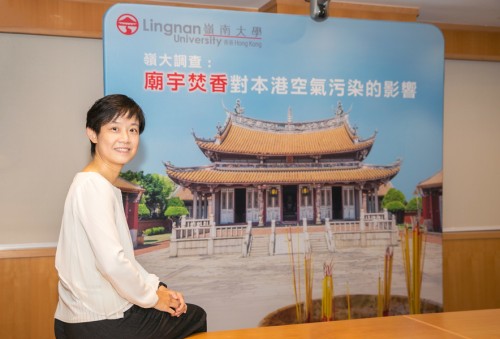LU study finds air pollution levels of incense-burning temples far exceeds air quality standards

A recent study conducted by the Science Unit shows that concentrations of fine particulate matter (PM2.5) from incense burning both inside and outside temples could be 6 times and 4 times of the recommended levels respectively. In addition, the more temples there are in the same district, the higher the respiratory mortality rate.
Led by Prof Paulina Wong Pui-yun, Assistant Professor of the Science Unit, the LU research team examined 366 temples in Hong Kong, classifying them according to their geographical characteristics, and installing data collecting logging devices in those with a heavier pedestrian flow.
Air samples were collected from five temples with heavy pedestrian traffic in Western and Central Districts, Kowloon West and Kowloon East through air monitoring instruments installed at the main entrances, inside and outside the temples to monitor the 24-hour average concentration of PM 2.5 in the air.

Photo: Prof Paulina Wong Pui-yun, Assistant Professor of the Science Unit shares
with the media about her research on incense-burning temples’ impact on air pollution in Hong Kong.
It was found that during peak periods, the PM2.5 concentration levels in both indoor and at the main entrances of most temples exceeded the recommended standards suggested by the HKSAR Government (75 μg/m3) and the World Health Organisation (WHO) (25 μg/m3). The readings gathered inside one of the sampled temples during peak periods stood at 466 μg/m3, which was 6 times and 18 times of both standards respectively; while another temple’s front entrance reading was 299 μg/m3 -- 4 times and 12 times of both standards.
The team analysed respiratory mortality rates in 2001, 2006, 2011 and 2016 released by the HKSAR Government, comparing relationships between them and distribution of temples, the temple index and other environmental factors including building density, greenery density, and water density.
Results suggest that incense burning in temples is a main factor in air pollution, and the more temples located in the same district, the higher the reported rate of respiratory mortality. In 2016, for instance, there were 31 out of every 100 people died from a respiratory disease in Lo Wai (17 temples), comparing to 18 in Kwai Fong (3 temples). Similarly, there were 31 out of every 100 people died from respiratory disease in Shau Kei Wan (5 temples), and in Quarry Bay (1 temple), the figure was 18.
The research team suggests that alternative measures, such as installation of automatic mist sprayers to reduce smoke dispersion, as well as using incense made with non-toxic substances to minimise health risks to worshippers and neighbours, should be considered.
Click here for the research details.

